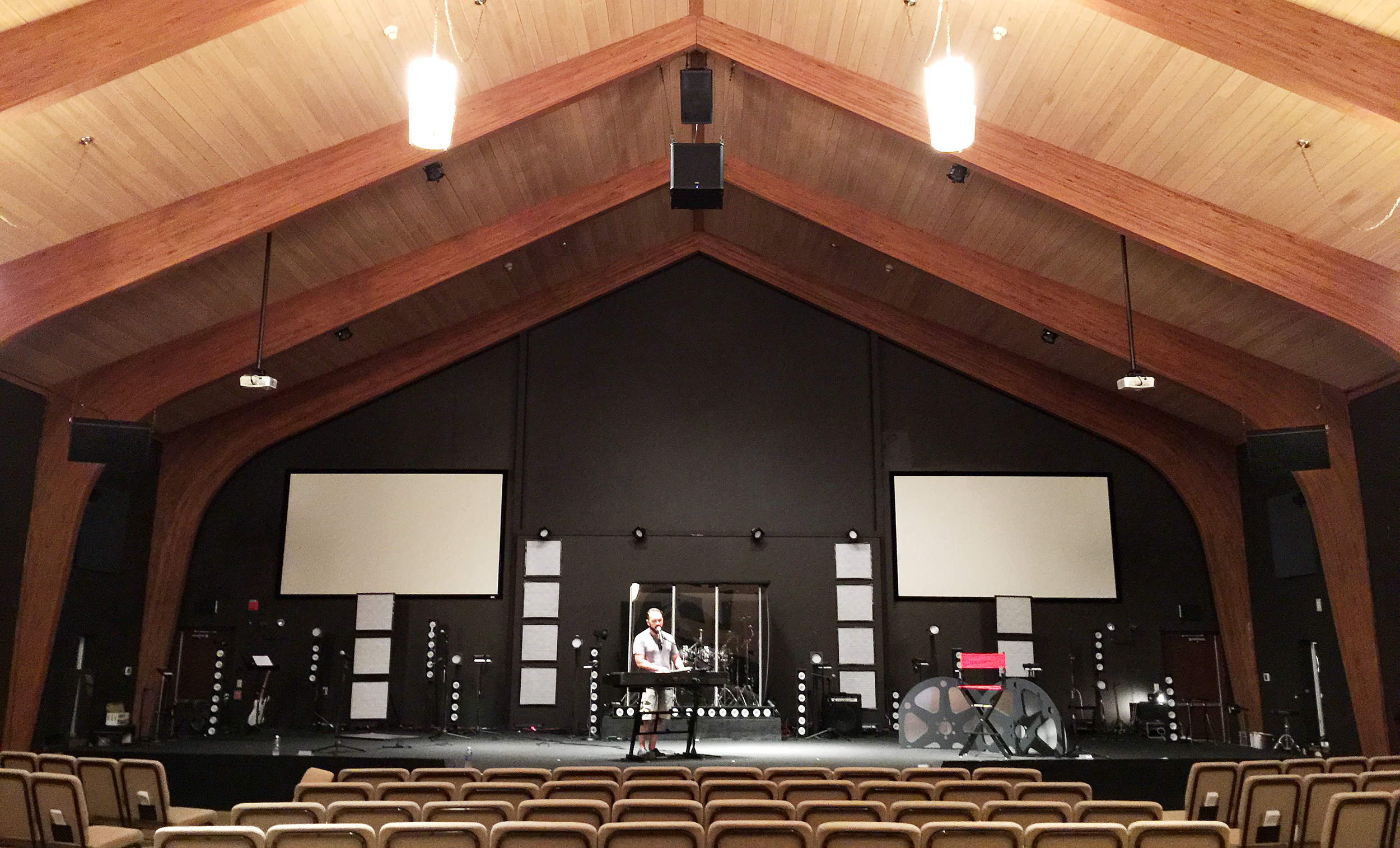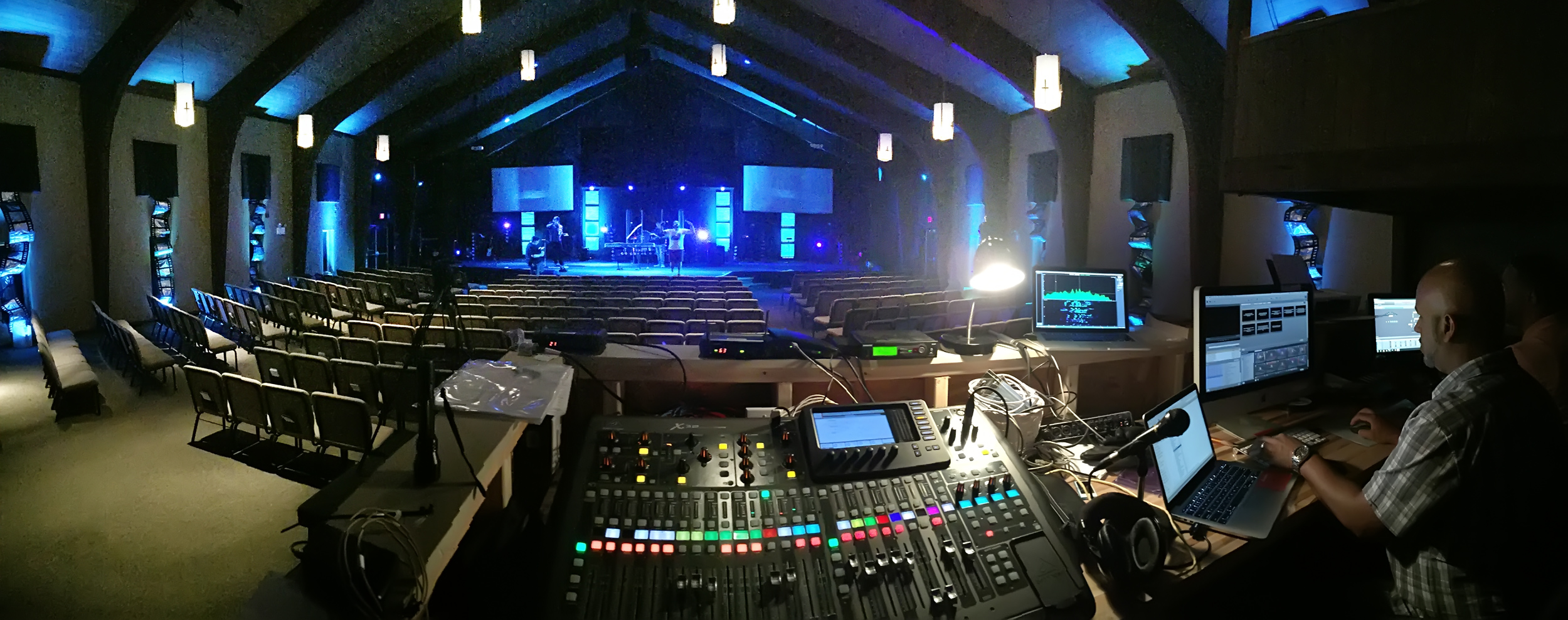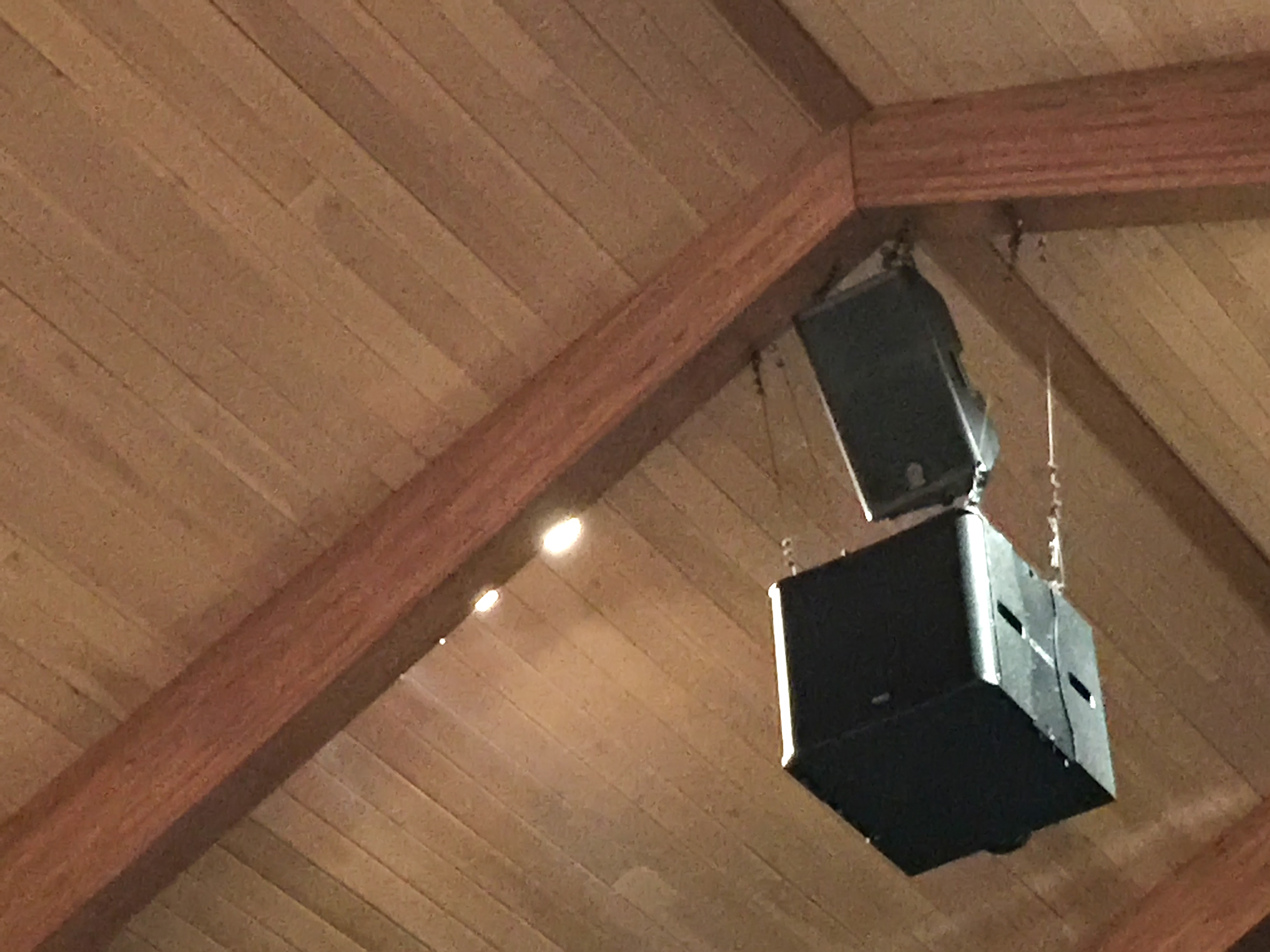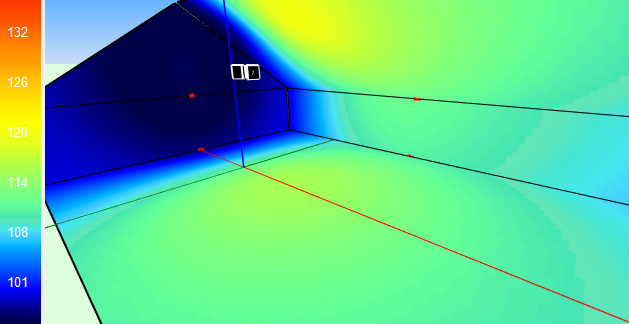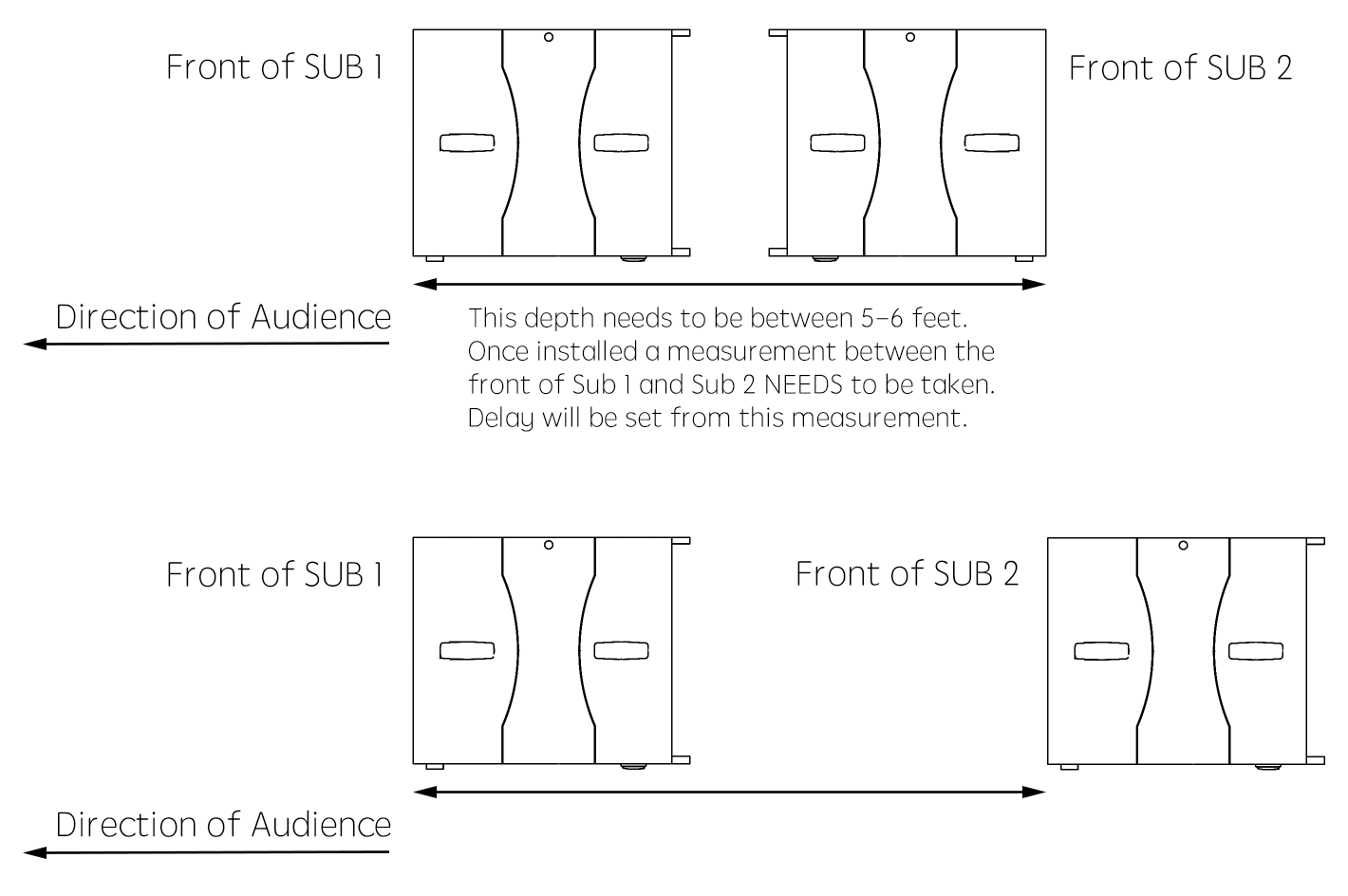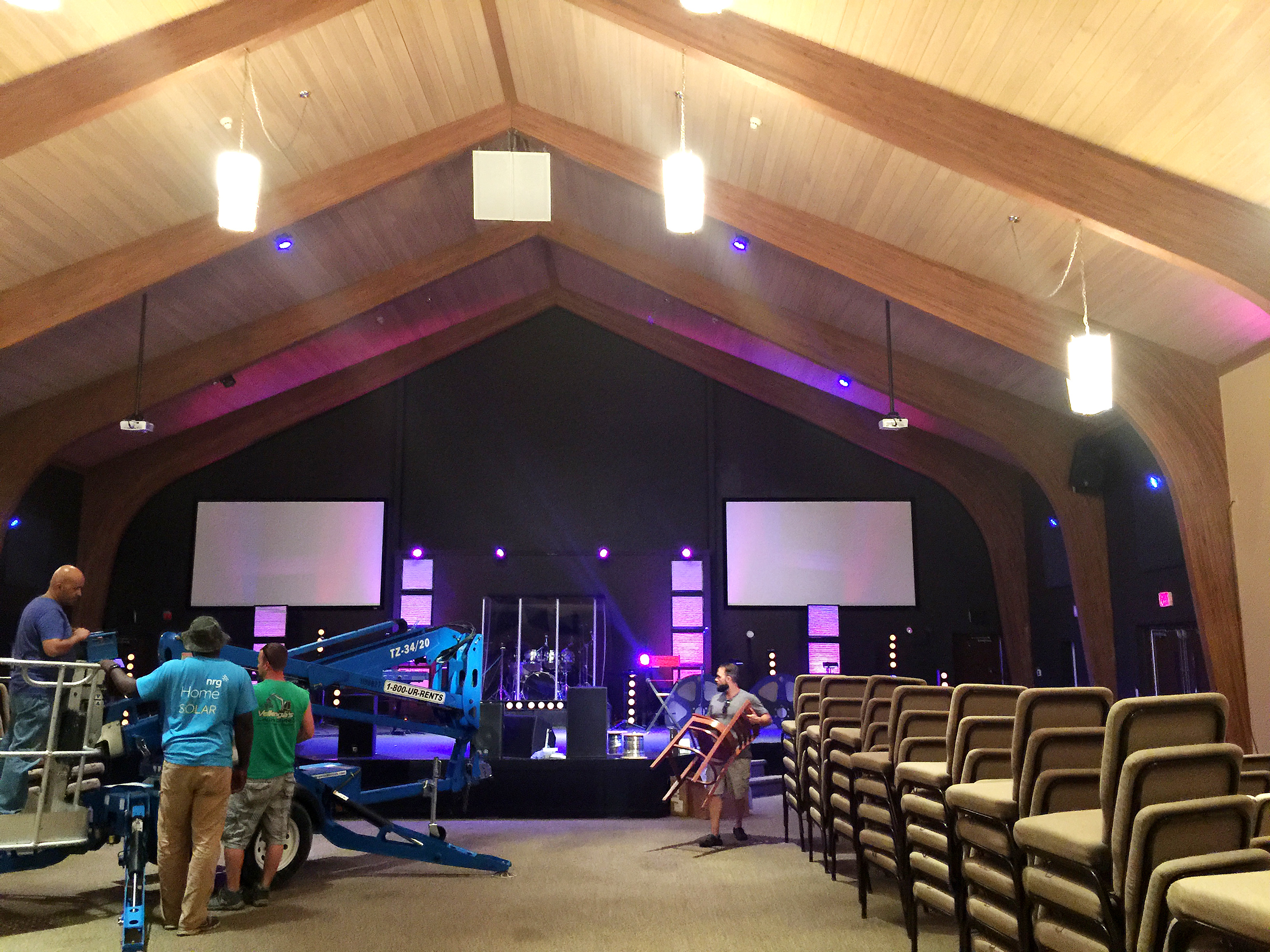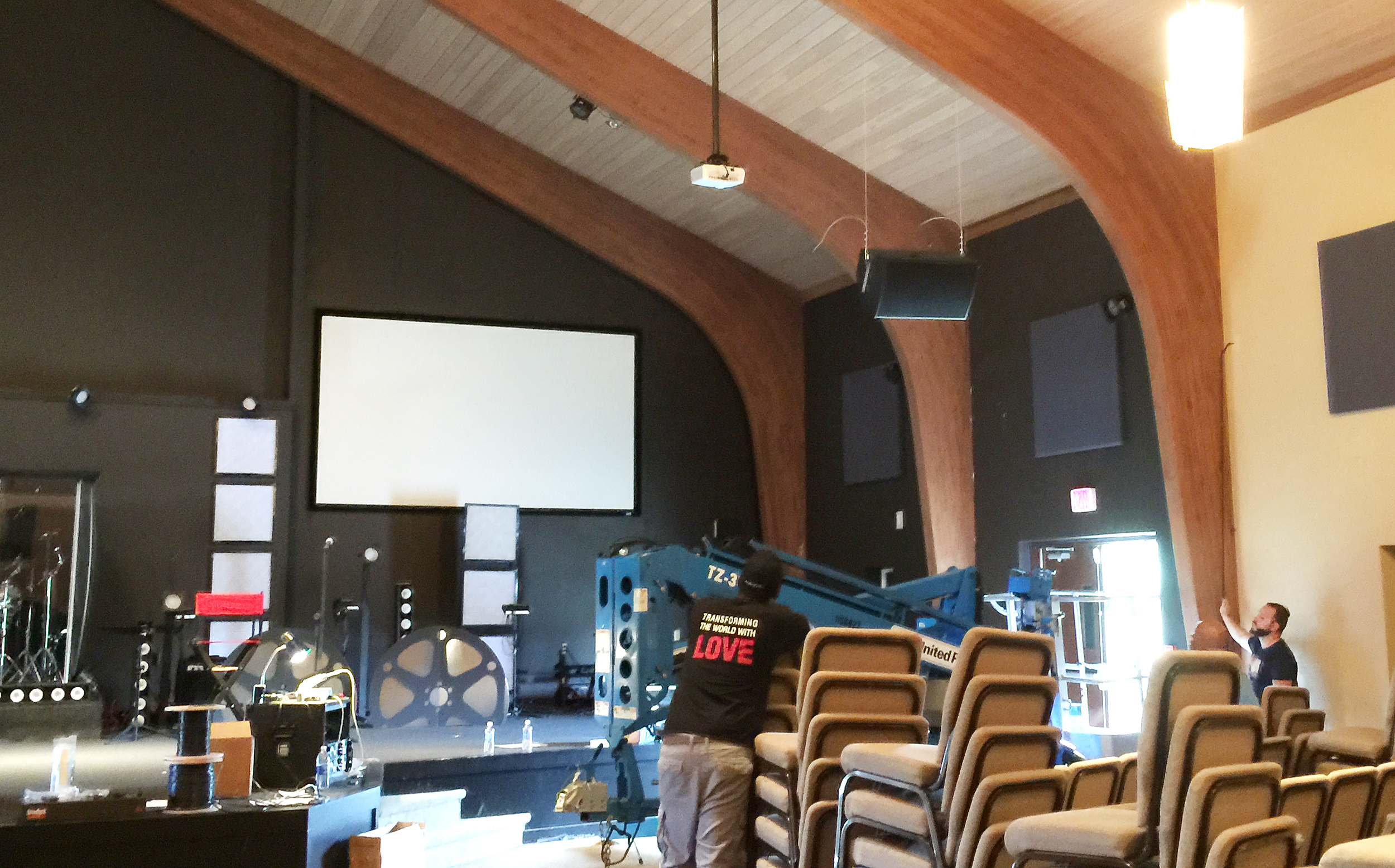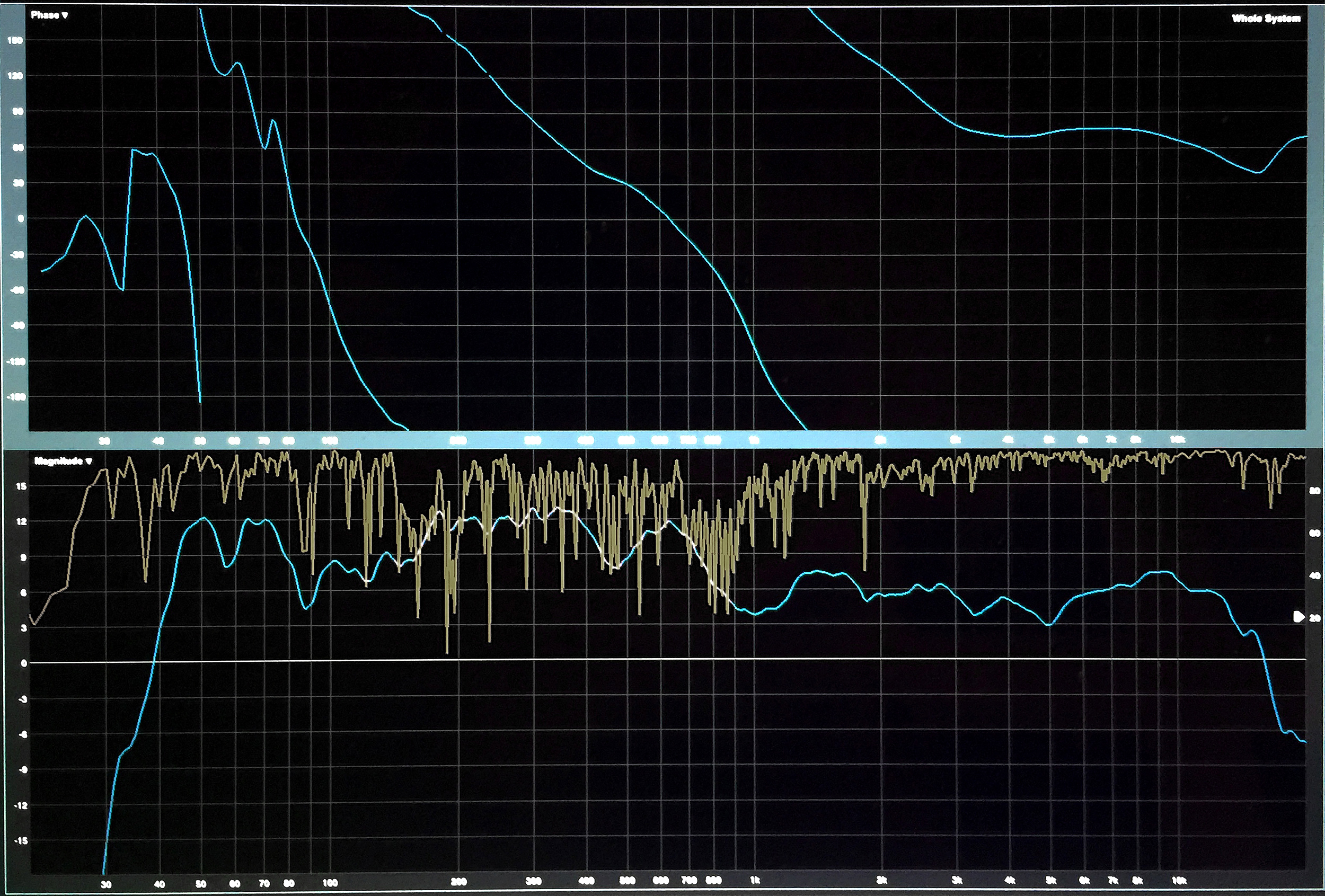LCR Sound System – A Perfect Solution for Transformation Church
A while ago I had the opportunity to fly out to Middletown, New York to help consult for Transformation Church. They had some really specific audio issues and they brought me in to help solve them! If you haven’t checked out the previous posts yet, I would take a look at them first!
Today, I want to go over what the final setup was in the church. Unfortunately, it is not exactly what I wanted it to be, but due to a few last-minute budget restraints, lack of load bearing mounting points and a few hiccups during installation; it turned out to be a wonderful setup.
The Audio System Needs
When doing a system upgrade or system install, you need to hammer out specifically what the main priority of the church is. The two main priorities always boil down to music and the sermon. For this church, the main goal was to have every seat have a perfectly clear understanding of the spoken word, and music was a very close second. They really wanted to have a pumping system similar to the kind produced by VIZIO for the music set, with stereo and full of subwoofers that would really get the low-end pumping.
Mono vs. Stereo
This is ALWAYS a really big decision and it really always boils down to the room setup. Transformation Church happened to have a perfect room setup for bringing in stereo for the music. This happened to be one of the requests from the church, “if possible, we would LOVE stereo.” Now, I love stereo, hearing the drumkit in full stereo with the toms panned, keyboard patches and vocal effects that bounce around the stereo speakers; what is not to like about it!
However, for spoken word, it is a bit lacking and I will tell you why. When a channel is not panned left or right it is coming out of both the left and right speakers equally. When you are in the center of the room, this is great, you hear both speakers equally and at the same time. For anyone that is NOT in the center of the room, this means that they will hear one speaker just a few milliseconds before the other speaker. Sit on the left side of the room, you will hear the left side first, then the right speaker slightly later. That slight delay will cause interactions in the high frequency and will cause unwanted boosts and cuts. Those unwanted boosts and cuts are called ‘Comb Filtering’ and is generally a bad thing.
This type of interaction changes depending on how far you are from the center and even how close you are to the speakers.
Human Hearing
Let’s think about the human hearing for a bit. When we are listening to someone talk, our hearing will give us direction as to where they are talking from, and our eyes will verify that with what we see. That direction which our hearing is directing us to, let’s call that a ‘Point-Source’. Now imagine seeing someone on the far left side of you, but hearing them talk only on the right side of you. That would not only be quite distracting but annoying too! Another example is watching a movie where a car enters from the left side of the frame, but the sound comes from the right side. While these are two very extreme examples, these show you that our minds really want to be hearing the person talking in the same direction as they are from us.
The Mono System
Looking back at the church, I want to recreate that point-source in the most natural way where the sound is originating from one main point in a direction that is natural for where the pastor is. This is where mono systems really shine and specifically a ‘mono point-source array’ where all of the sound for the entire room is originating from one single array. Below we can see the same room as above in the stereo example, however, this speaker is located in the center.
Now, we can see that the coverage of the room has greatly improved and there is no significant interactions or differences in location of the room. The only part where a mono system suffers is not being able to create a stereo spread, this will make the musicians in us a bit bored when listening to music.
Remember to what our goal was for the church, they wanted speech to be the primary goal. If music was the goal I would be more focused on creating that stereo spectrum and making sure to pan instruments.
LCR – Left, Center, Right – The best of both worlds!
But Drew, what if we were to set up two systems, both a mono AND a stereo system and had the music/band going through the stereo system but have the speech/vocals go through the mono system! I couldn’t agree with you more! In fact, this is what we call a Left Center Right, LCR, system and is one of my favorites to employ!
The LCR system has the center speaker with a coverage large enough to cover every seat in the house and we dedicate sending vocals and speech to this channel. This allows for a ‘point-source mono array’ for the speech which not only has great coverage to every seat in the room but also gives us our single natural point source to let our minds focus on the service. Music, on the other hand, is sent in a stereo spread to the left and right speakers and allows for panning to give a stereo feel to the music.
The complexity of an LCR system is mainly seen in the sound board and challenges can happen if one doesn’t have a specific LCR board. Luckily, Transformation Church has the Behringer X32 which has an LCR mode with the board. (to do this on the Behringer X32, go to the Setup>Config tab>Panning Mode>Change from ‘LR + Mono’ to ‘LCR enable’)
One thing to note about an LCR system, when mixing and something is ‘panned’ to the center, there is a little bit that will come out of the left and right speakers with the way the X32 is set up. This is good for covering the far edges that are close to the stage. The front row is always hardest to mix for, if you have too much volume, you will have a greater chance of feedback! However, with this setup, there was a perfect coverage from the rear all the way to the front row!
Transformation Church Setup
Whenever I am working with a church on an installation, I want to get a list of what gear they have installed currently, what gear they have already purchased and if there are any damages to the gear. If a piece of gear is at the tail end of its useful life, we would probably want to replace that!
The list of gear came back as this:
New Just Purchased:
- 2 – EV QRx 115/75
Currently Installed and Using:
- 2 – Community CPL46w Speakers (OLD)
- 2 – Yamaha S115V Speakers (OLD)
- 2 – 18″ Yorkville LS801P Powered Subwoofers
- 2 – QSC RMX 2460 Amplifiers
- 1 – Crown 1000w Amplifier
In Storage:
- 2 – Yamaha DXR12 Powered Two-Way Speakers
Left & Right Speakers
Because the church had already purchased the EV QRx 115/75 speakers, I decided to keep those and make them work in the room. They got a really good deal on them with a local vendor and the possibility of returning them was out of the question. The QRx 115/75 has a 75×50 degree rotatable horn with a loudspeaker frequency response of 60Hz-15kHz (-3dB). I found that placing these on the sides of the room at around 15 feet gave a really nice coverage in the entire room. The church had roof braces that were able to support the weight of the speakers and a yoke cable was added to give the needed 35-degree horizontal inward direction. We mounted the speakers on their sides with the HF horn on the inside edge. These speakers are non-powered so they do require an amplifier. I decided to use them in a bi-amp configuration using the matching QSC RMX 2460 amplifiers. One amp powered the HF, the other amp power the LF with channel 1 being Left and channel 2 being Right. I chose bi-amp over full-range to allow for more flexibility and configuration during system tuning.
Center Speaker
The Yamaha DXR12 has a 90Hx60V degree coverage and has a perfect coverage when hung in the center of the room. Because of the upside-down arc type building, the center is the tallest part of the room. We ended up hanging the center speaker just above the subwoofer using the old mounting points from the original Community speakers. While the Yamaha speaker does sit back a few inches from the front grill of the subwoofer, the HF horn is not blocked. This speaker provided a perfect amount of coverage from the front row all the way to the back row!
Subwoofers
As we saw from the last post, the spaced subwoofers in the room were something that I wanted to fix. It gave every seat in the house a different sound so there was no uniformity in the room with the low end. I decided that flying an end-fire cardioid subwoofer array with two subwoofers was going to give the best for the room. Not to mention that the directivity of the cardioid array would lower the subwoofer energy on the stage resulting in less low-frequency feedback. I decided on the QSC KLA181 which is a powered 18″ subwoofer that is able to be suspended. My plan was to have two of these spaced apart by 5-6 feet. The front subwoofer would then be delayed by 5-6ms to allow for the subwoofers to be in-phase in the front of the array and out of phase in the rear of the array. This creates a cardioid pattern! I will be making a follow-up post on this in the future detailing a few different cardioid arrays and how to implement them!
Unfortunately, the church had a last minute budget restraint and was unable to purchase two of the QSC KLA181‘s. Therefore, we settled on a single flown subwoofer as it would STILL give a better low-frequency pattern as compared to the spaced subwoofers. The overall low-frequency volume suffered a little due to only having one sub, however, it is in the plans to add the second subwoofer in the future!
System Processor
If you have watched a lot of my YouTube videos, you will see that the Behringer X32 has a built-in crossover network that can be configured in the matrix section of the board. I made the decision that because this was a permanent install that if the board was ever changed, I wanted the speaker system to not have to be reconfigured. So, I had the church purchase a DBX VENU360 for the programming of the crossover network for the HF & LF of the QRx speakers, the full range for the Yamaha and the QSC subwoofer send. The send from the Behringer X32 was Left, Right, and Center from the board and I configured the subwoofer to pull off of the Left and Right inputs. This allowed for the guarantee for no vocal or speech to ever go through the subwoofer which is really what you want.
Install Photos
Here are a few of the photos of the install throughout the two days:
Overall Impressions
Overall I was very happy with the final installation. The clarity in the vocals coming through a single speaker separate from the music was awesome. The music portion sounded full and with keeping the stereo spread the band sounded great. I am a little disappointed that the second subwoofer was unable to be added at this time, but it will be a great addition and upgrade to the system in the future. The first Sunday with the new system, the congregation was blown away with how clear it was in comparison to the old system.
Final System Specs:
LCR System
Left & Right Speakers: EV QRx 115/75
Center Speaker: Yamaha DXR12
Subwoofer: QSC KLA181
System Processor: DBX VENU360
Sound Board: Behringer X32
